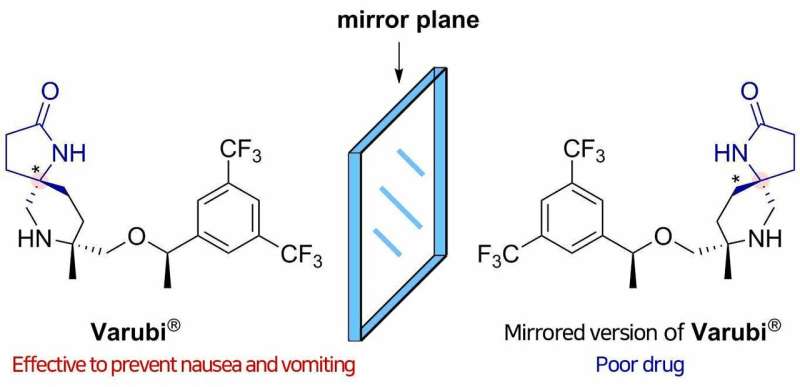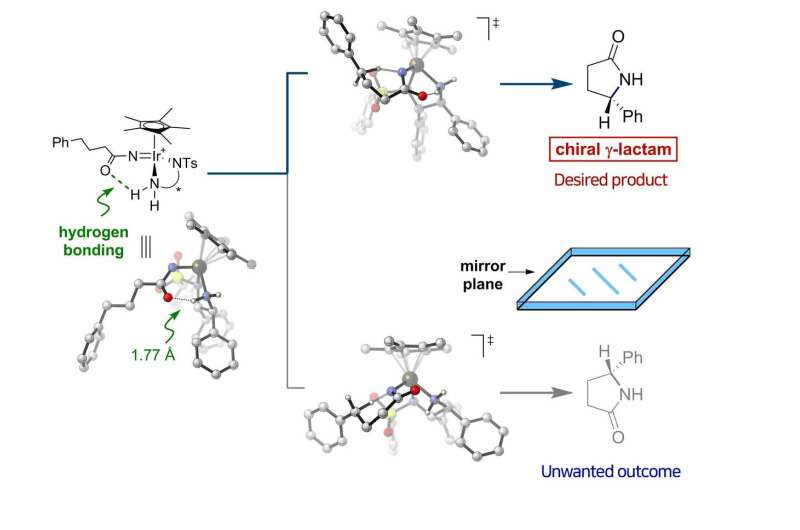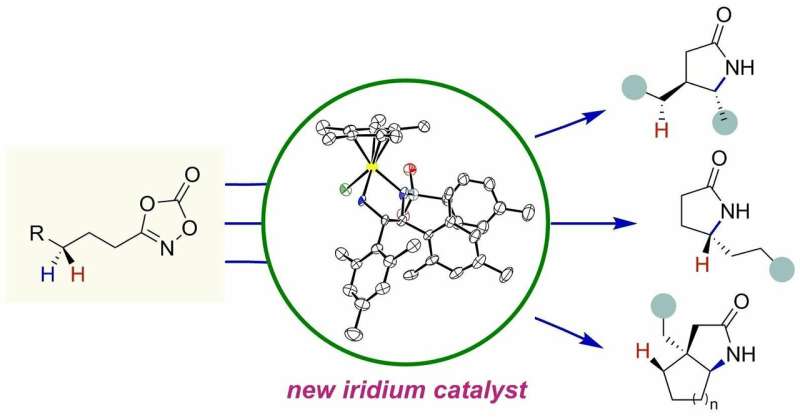Synthesizing useful compounds without forming unwanted chiral partners

Did you know that more than half of the drugs currently in use are chiral, potentially resulting in two different responses in the body? Chiral compounds are pairs of molecules that are mirror images of each other, just like a person's right and left hand. Since the body interacts with each molecule differently, a chiral drug may produce the desired effects from one molecule, along with an unwanted side effect from its mirror image. It would be much safer and more efficient to make pure compounds without forming their unnecessary mirrored versions that only go to waste, but such selective synthesis has remained one of the most difficult challenges in drug discovery.
Led by professor Chang Sukbok, researchers at the Center for Catalytic Hydrocarbon Functionalizations within the Institute for Basic Science (IBS) in Daejeon, South Korea, have reported that they created a group of new chiral iridium catalysts for the selective synthesis of chiral lactams. Though lactams are key building blocks in many pharmaceutical agents, for example, penicillin, a notable lactam-based antibiotic, there have been few efficient ways to single out only one molecule from a pair of the symmetric mirror images. The new catalysts allowed the researchers to bias synthesis in favor of producing one product over the other with 99 percent selectivity.
The atoms in chiral drugs are connected in the same way but differ in how they are oriented in space. The researchers identified which catalyst induced a righty rotation and which caused a lefty rotation. Combining experimental observations and detailed computer simulations, they found that transient formation of hydrogen bonding between a substrate and the catalyst induced such high segregation in the reaction.

The hydrogen bonding is a ubiquitous interaction of molecules in nature. As this connection stabilizes intermediates and transition states during the course of a reaction, it eventually leads to the production of chiral lactams allowing high selectivity. The first author, Dr. Yoonsu Park states, "It was key to understand the reaction mechanism in order to facilitate further catalyst development. This mechanism-based approach and reaction design model allowed us to find this novel transformation."
Notably, this study suggests a sustainable protocol to produce highly sought-after, invaluable chiral lactams. By using inexpensive and readily available feedstock hydrocarbons, the researchers produced a group of chiral lactams in different shapes. As their chirality and diverse structures enable lactams to function as an active compound in the body for antibiotic, anti-inflammatory, or anti-tumoral functions, this study may facilitate the development of potential drugs in a more efficient and cheaper way.
"This is a major step forward in the area of asymmetric catalysis. As lactams find several applications in medicinal, synthetic, and material chemistry, our study may offer foundations in developing safer and more effective clinical drugs," explains professor Chang.

More information: Yoonsu Park et al. Asymmetric formation of γ-lactams via C–H amidation enabled by chiral hydrogen-bond-donor catalysts, Nature Catalysis (2019). DOI: 10.1038/s41929-019-0230-x
Journal information: Nature Catalysis
Provided by Institute for Basic Science


















